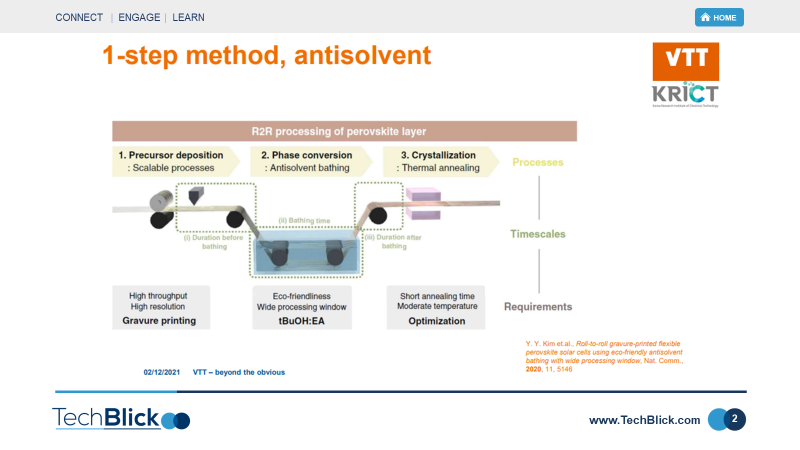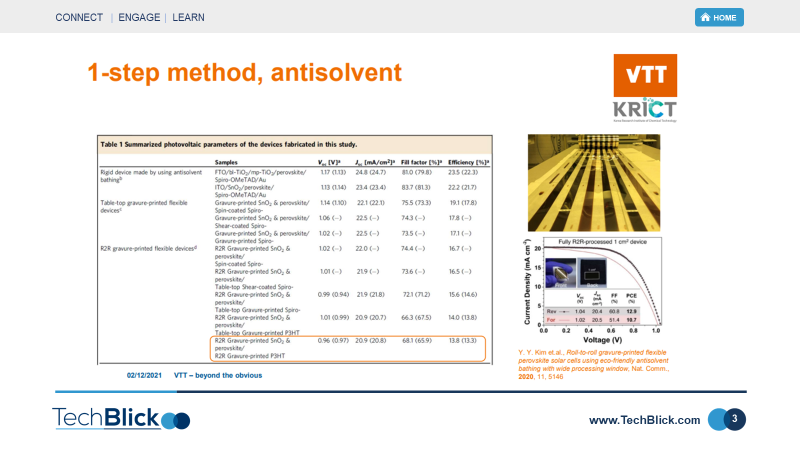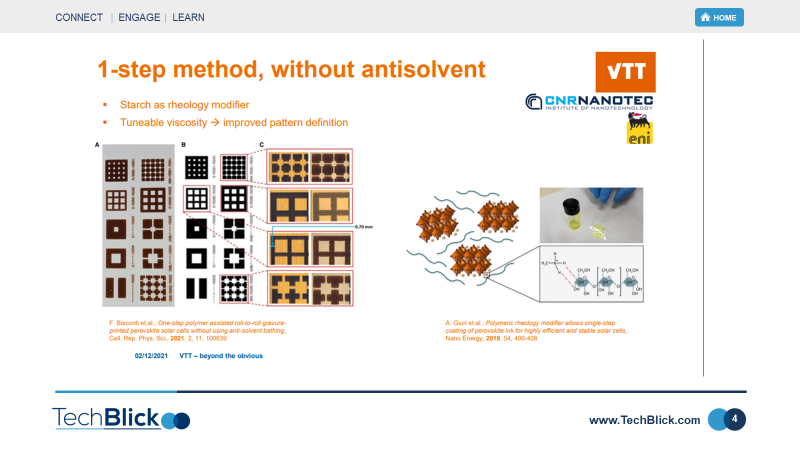This would be a major step towards industrialization. Here, we discuss the transition from 2-step printing to one step printing with antisolvent to one-step printing with no antisolvents. Riikka Suhonen et al discussed the latest developments at TechBlick's event in Dec 2022. Here is a summary
2-step approach: In general, most approaches are based on a 2-step printing in which the lead iodide (from PbI2-DMSO ink) is first gravure printed on a printed SnO2 NPs layer and then dried. The DSMO is then washed away in a water and isopropanol path and the remaining porous layer is dipped into a chemical second path to form MAPbl3. The 'pilot' R2R runs yield PCE of 9.7%. This approach requires two chemical steps, slowing the process. Furthermore, handling the porous Pbl3 layer is difficult in R2R environment and oncersion to FA- or FACs-perovskite challenging
1 step printing + antisolvet: the standard antisolvent is ether but this can not be printed due to high volatility. Therefore, there has been huge effort in developing an antisolvent which could be printed industrially and was environmentally friendly. VTT et al developed the tBuOH:EA system. This way they achieved fully R2R gravure printed perovskites with efficiency of 13.8%. This is an elegant solution. Nonetheless, There is a desire to eliminate the antisolvent step as it will require a spray or bath step together with solvent fumes.
1 step printing: Here they used starch as a rheology modifier with perovskite precursor, forming a viscous ink which can be used to print well-defined patterns. In this R2R 'lab' printing starch-based MAPb3I inks they used IR annealing and hot air annealing. The first lab runs showcased a champion result of PCE 9.9%. This is still an early stage development but shows that reasonble efficiencies can be achieved using R2R gravure printing with only a single step!
Of course- these results are early stage. Lifetime remains an issue and development area. Nonetheless, this is an important field to watch further
We will soon announce the agenda for our 2022 edition of TechBlick's event on organic, perovskite, and tandem photovoltaics











Comments